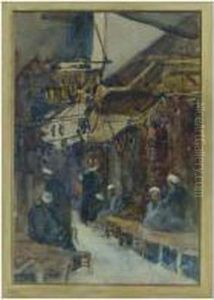Ada F. Whidborne Paintings
Ada F. Whidborne was an English artist born in 1857, whose work significantly contributed to the fields of watercolor painting and botanical illustration during the late 19th and early 20th centuries. Although not as widely recognized as some of her contemporaries, Whidborne's meticulous attention to detail and her dedication to accurately depicting plant life have earned her a respected place among botanical illustrators of her time. Her life and career offer an insightful glimpse into the challenges and achievements of female artists in a period when the art world was predominantly male-dominated.
Whidborne's artistic journey began in an era when opportunities for women in the arts were limited, and education for women in this field was not as accessible as it is today. Despite these obstacles, she honed her skills through private tuition and possibly attendance at one of the few art schools open to women at the time. Her work primarily focused on the natural world, with a particular emphasis on the accurate representation of plants and flowers. This dedication to botanical accuracy was not only a testament to her skill and patience but also contributed valuable knowledge to the field of botany.
Throughout her career, Ada F. Whidborne participated in various exhibitions, showcasing her talent in watercolor painting and drawing. Her illustrations were celebrated for their technical precision and artistic beauty, bridging the gap between scientific documentation and fine art. Whidborne's contributions to botanical art were part of a larger movement during the Victorian era, which saw a surge of interest in the natural sciences, including botany. This period's fascination with cataloging and understanding the natural world provided a unique opportunity for artists like Whidborne to contribute their skills to scientific endeavors.
Despite her achievements, Ada F. Whidborne remained relatively obscure compared to some of her peers. The reasons for this may include the general undervaluation of women's contributions to art and science at the time, as well as the specialized nature of her work. However, in recent years, there has been a growing appreciation for botanical illustration and the artists who dedicated their careers to this discipline. As a result, Whidborne's work has begun to receive more recognition for its contribution to both the art and scientific communities.
Ada F. Whidborne passed away in 1934, leaving behind a legacy that continues to inspire and inform. Her dedication to botanical illustration not only enriched the scientific community's understanding of plant life but also left an indelible mark on the world of art. Today, her works are studied and admired by those who appreciate the intricate beauty of the natural world and the skill required to capture it on paper.
